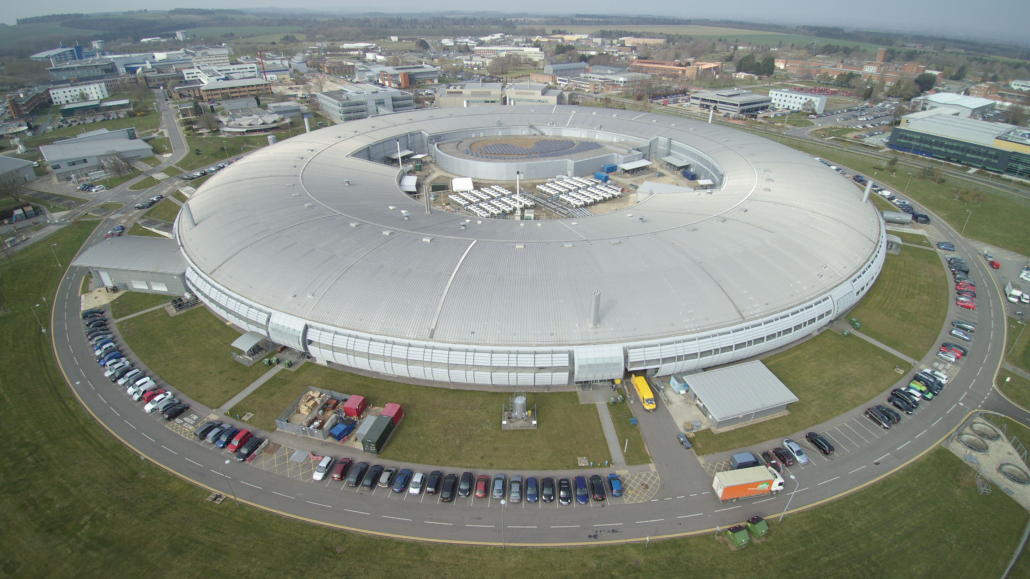New CEO appointed for the UK’s national synchrotron, Diamond Light Source
It was today (9th August 2023) announced that Professor Gianluigi Botton has been appointed as the new Chief Executive Officer (CEO) of Diamond Light Source, one of the world’s leading science facilities. He joins Diamond from the Canadian Light Source where he has been its Science Director since May 2019. He will take up his position in October.
Professor Botton is a renowned expert in microscopy and spectroscopy with an impressive track record in research and funding, having secured more than $50M as Principal Investigator and $90M as a co-investigator and has more than 350 peer-reviewed publications. His work has been cited more than 34,000 times. Over the course of his highly successful career, Gianluigi has been awarded the Microbeam Analysis Society’s Presidential Award (2020) and the Metal Physics Award of the Canadian Materials Science Conference (2017); he is a Fellow of the Royal Society of Canada (2018) and Fellow of the Microscopy Society of America (2014).
Professor Sir Adrian Smith, Chairman of the Diamond Board of Directors says: “We are delighted that Gianluigi is joining our team. He has a wealth of experience, not just as a scientific leader, but has first-hand experience of delivering complex experiments for users, especially in the key area of imaging, where he specialises in using advanced microscopy and spectroscopy techniques to examine materials at the atomic scale and to develop more energy-efficient materials for applications such as batteries, fuel cells and lighting applications. We believe his input will be invaluable as we now move into the detailed planning and delivery for Diamond-II.”
Sir Adrian adds:
“I am extremely grateful to Andrea Ward for the substantial contribution she has made by stepping in as CEO over the past 10 months. Her leadership provided a steady transition that has been much valued and appreciated by the Board. I also thank the other members of the executive who stepped to help in that period, especially Dr Richard Walker who took on the substantial role of Senior Responsible Owner (SRO) for the successful Diamond-II funding application.”
Commenting on his new role, Professor Botton states:
“I’m really looking forward to leading and contributing to the world-class science that Diamond, its people, and users already deliver. It is a really exciting time for science with Diamond-II just around the corner as it will offer the scientific community in academia and industry a huge range of new opportunities to perform the science required to tackle the biggest challenges humanity faces, from climate change to future pandemics. All this, whilst continuing to provide the most internationally competitive infrastructure to develop new materials, new therapies and the technologies for a more sustainable future.”
Prior to joining the Canadian Light Source, Gianluigi established the Canadian Centre for Electron Microscopy (CCEM), a national facility for ultrahigh resolution microscopy as the Scientific Director from the start of operations in 2008 until 2019.
Gianluigi is also Professor in the Department of Materials Science and Engineering at McMaster University where he currently holds a Tier 1 Canada Research Chair in Electron Microscopy of Nanoscale Materials. Professor Botton earned a PhD in materials engineering from École Polytechnique de Montréal and has held positions as both an NSERC Post-doctoral Fellow and senior research associate at Cambridge University in England where he spent 5 years. He has also served as a research scientist with Natural Resources Canada.
https://www.diamond.ac.uk/Home/News/LatestNews/2023/090823.html
For further information: please contact Diamond Communications: Lorna Campbell +44 7836 625999 or Isabelle Boscaro-Clarke +44 1235 778130 Diamond Light Source: www.diamond.ac.uk Twitter: @DiamondLightSou
Diamond Light Source: works like a giant microscope, harnessing the power of electrons to produce bright light that scientists can use to study anything from fossils to jet engines to viruses and vaccines. The machine accelerates electrons to near light speeds so that they give off light ten billion times brighter than the sun. These bright beams are then directed off into laboratories known as ‘beamlines.’ Here, scientists use the light to study a vast range of subject matter, from new medicines and treatments for disease to innovative engineering and cutting-edge technology. Whether it’s fragments of ancient paintings or unknown virus structures, at the synchrotron, scientists can study their samples using a machine that is 10,000 times more powerful than a traditional microscope.





